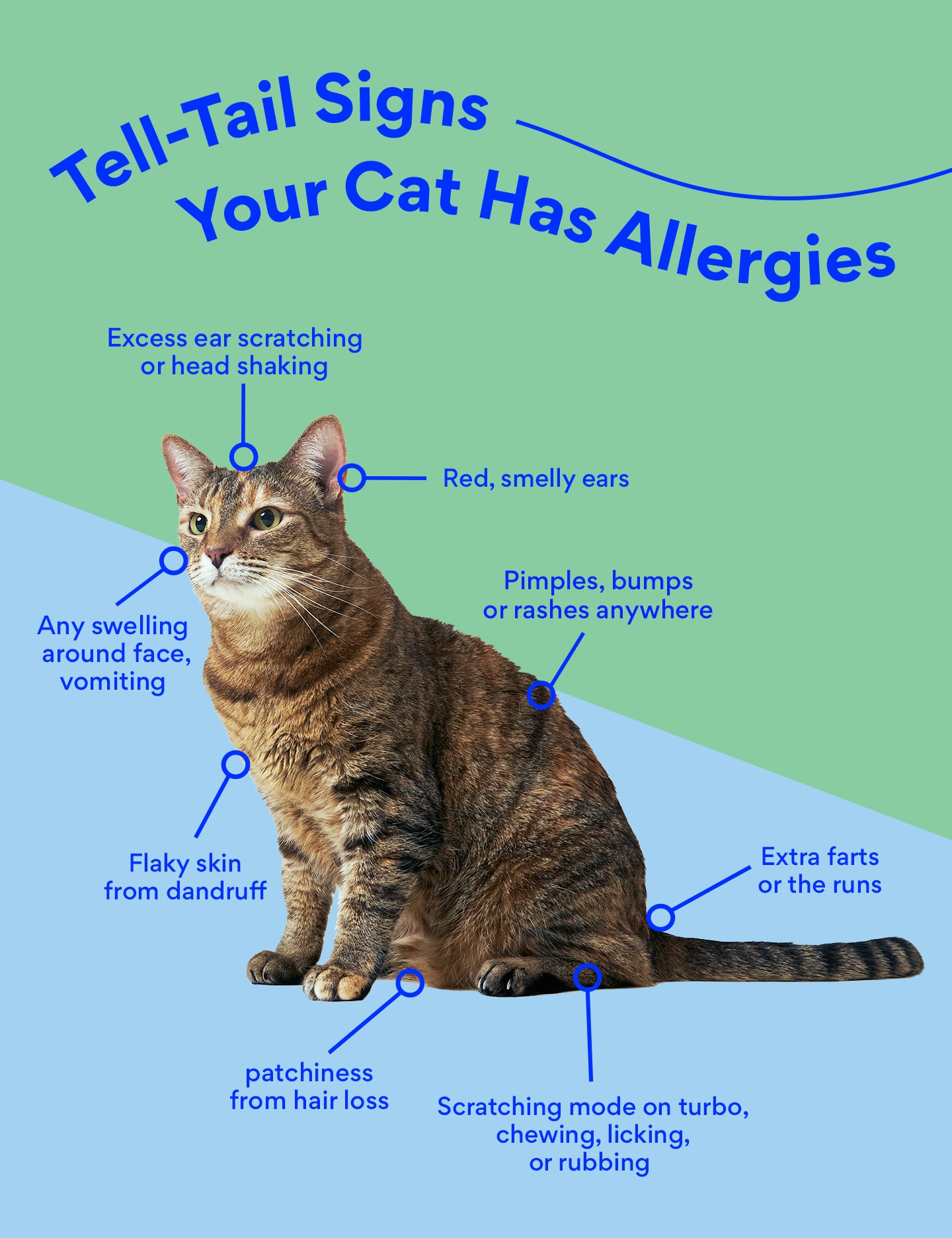Introduction

Cat allergies are a common issue for many individuals who love their furry companions but find themselves sneezing, itching, and experiencing other uncomfortable symptoms whenever they are around cats. These allergies can make it challenging to enjoy the company of these beloved pets and may even lead to the difficult decision of giving up a cat. However, with proper understanding and preventive measures, it is possible to manage cat allergies and continue living happily alongside your feline friend. In this article, we will explore the causes of cat allergies, ways to reduce exposure to allergens, medications and home remedies, alternative therapies, allergy-friendly cat breeds, and tips for living with a cat allergy.
Cat allergies

Cat allergies are a common condition where individuals have an allergic reaction to the proteins found in the dander and saliva of cats. When exposed to these allergens, the immune system overreacts, causing symptoms such as sneezing, itching, watery eyes, and difficulty breathing. It is estimated that approximately 10% of the population is allergic to cats. While some people may develop cat allergies later in life, others may have a genetic predisposition to this condition. Managing cat allergies can be challenging, but with proper understanding and preventive measures, individuals can still enjoy the company of their furry companions.
symptoms and how they develop

Cat allergies can cause a range of symptoms that can vary in severity from person to person. Some common symptoms include sneezing, itching, watery eyes, runny nose, and nasal congestion. These symptoms develop when the immune system recognizes the allergens present in cat dander and saliva as harmful substances and releases histamines to combat them. Over time, repeated exposure to cat allergens can lead to the development of more severe allergic reactions. It is important to recognize these symptoms and seek appropriate treatment to manage cat allergies effectively.
Understanding the Causes

Understanding the causes of cat allergies is essential for effectively managing symptoms and reducing exposure. Cat allergies occur when the immune system overreacts to proteins found in cat dander and saliva. These proteins are known as allergens and can trigger allergic reactions in susceptible individuals. It is important to note that it is not the cat's fur itself that causes allergies, but rather the proteins attached to the fur. By understanding these underlying causes, individuals can take proactive steps towards minimizing allergen exposure and finding relief from their symptoms.
Understanding the causes of cat allergies

Cat allergies are caused by an immune system reaction to certain proteins found in a cat's dander, saliva, or urine. When a person with allergies comes into contact with these allergens, their immune system reacts abnormally, releasing chemicals such as histamine that cause allergy symptoms. The specific protein that triggers the allergic response varies from person to person, but the main culprits are Fel d 1 and Fel d 4. These proteins are produced by the sebaceous glands in a cat's skin and are then spread through their fur when they groom themselves.
Proteins in cat dander and saliva

Proteins found in cat dander and saliva are the main triggers of allergies in individuals who are sensitive to cats. These proteins, known as allergens, can cause the immune system to overreact when they come into contact with the skin, eyes, or respiratory system. Cat dander consists of tiny flecks of dead skin that cats shed naturally, while saliva can be transferred through grooming or when a cat licks their fur. These proteins are lightweight and can easily become airborne, making it difficult to avoid exposure for people with cat allergies.
Reducing Exposure to Cat Allergens

Reducing exposure to cat allergens is crucial for individuals with cat allergies who still want to enjoy the companionship of a furry friend. One effective method is to create designated "cat-free" areas in the home, such as bedrooms or living rooms, where the cat is not allowed. This helps minimize contact with allergens where individuals spend most of their time. Regular cleaning and vacuuming are also essential to remove dander and hair from surfaces. Additionally, using allergen-proof covers for pillows and mattresses can prevent allergens from accumulating in these areas.
Reducing exposure to cat allergens

Reducing exposure to cat allergens is crucial for individuals with cat allergies. One of the most effective ways to minimize allergen exposure is by keeping the cat out of certain areas of the home, such as bedrooms or other allergic individuals' living spaces. It is also important to regularly clean and vacuum surfaces, furniture, and carpets to remove any allergens that may have accumulated. Additionally, using allergen-resistant covers on bedding and pillows can help reduce exposure during sleep. By implementing these measures, individuals can significantly decrease their exposure to cat allergens and alleviate allergy symptoms.
Air filtration and cleaning

Air filtration and cleaning play a crucial role in reducing exposure to cat allergens. Investing in a high-quality air purifier with a HEPA filter can help remove allergens from the air, making it easier to breathe. It is important to clean your home regularly, focusing on areas where allergens tend to accumulate, such as carpets, curtains, and furniture. Vacuuming with a HEPA filter and dusting using damp cloths can help remove dander and reduce allergen levels. Cleaning the litter box frequently and keeping it in a well-ventilated area can also prevent the spread of allergens. Performing these cleaning tasks regularly can significantly reduce cat allergen levels in your home.
Preventative Measures

To minimize exposure to cat allergens, taking preventative measures is crucial. One effective way is to establish designated areas in your home that are off-limits to your cat, such as bedrooms or other frequently used rooms. This helps create a safe space where you can retreat and avoid allergens. Additionally, using allergen-proof bedding covers on mattresses and pillows can provide an extra layer of protection. Regular vacuuming with a HEPA-filtered vacuum cleaner and frequent dusting can also help reduce allergen levels in your home. By implementing these preventative measures, you can potentially alleviate the symptoms of cat allergies and create a more comfortable living environment.
Preventative measures to reduce cat allergen exposure

To reduce cat allergen exposure, there are several preventative measures that can be taken. First and foremost, it's important to establish an allergen-free space within your home. This can be a designated room or area where your cat is not allowed to enter. Additionally, regular cleaning is essential in minimizing allergens. Vacuuming carpets and furniture, dusting surfaces, and washing bedding frequently can help remove any lingering dander. It's also advisable to use allergen-proof covers on mattresses and pillows. By implementing these preventative measures, you can create a more allergy-friendly environment for yourself or others who may be sensitive to cat allergens.
Bathing and grooming your cat

Bathing and grooming your cat is an essential part of managing cat allergies. While cats are known for their cleanliness, regular baths can help reduce the amount of allergens on their fur. Use hypoallergenic shampoos specifically formulated for cats to minimize allergic reactions. Grooming your cat with regular brushing helps remove loose fur and dander from their coat. It is important to keep their coat clean and free of mats, as these can trap allergens. Regular grooming and bathing can significantly reduce the presence of allergens in your home and alleviate allergy symptoms.
Medications and Home Remedies

When it comes to managing cat allergies, there are various medications and home remedies that can help alleviate symptoms. Antihistamines, such as cetirizine or loratadine, can help reduce itching and sneezing. Nasal sprays, like fluticasone or mometasone, can provide relief for nasal congestion. Allergy shots, also known as immunotherapy, may be recommended for those with severe allergies to help build tolerance over time. Additionally, some people find relief through home remedies such as saline nasal rinses or steam inhalation. It's important to consult with a healthcare professional before trying any new treatments.
Medications and home remedies for cat allergies

When it comes to managing cat allergies, there are various medications and home remedies available to help alleviate symptoms. Antihistamines can be effective in reducing itching, sneezing, and nasal congestion. Nasal sprays can provide relief for stuffiness and inflammation in the nasal passages. Allergy shots, or immunotherapy, can gradually desensitize the body to allergens over time. In terms of home remedies, some people find that rinsing their nasal passages with saline solution helps relieve congestion. Steam inhalation and using a humidifier may also provide temporary relief for respiratory symptoms. However, it's important to consult with a healthcare professional before starting any new treatment or remedy.
Antihistamines, nasal sprays, and allergy shots

Antihistamines, nasal sprays, and allergy shots are common medications used to manage cat allergies. Antihistamines work by blocking the effects of histamine, a chemical released during an allergic reaction. They can help relieve symptoms such as sneezing, itching, and runny nose. Nasal sprays containing corticosteroids can reduce inflammation in the nasal passages and relieve congestion. Allergy shots, also known as immunotherapy, involve regular injections of small amount of allergens to gradually desensitize the body's immune response. These treatments can be effective in reducing the severity of cat allergy symptoms. It is important to consult with a healthcare professional to determine the most appropriate medication or treatment plan for individual needs.
Natural Supplements and Alternative Therapies

When it comes to managing cat allergies, some people turn to natural supplements and alternative therapies as a complementary approach. One popular natural supplement is quercetin, a plant pigment that acts as an antihistamine and anti-inflammatory agent. It can help reduce the symptoms of cat allergies by minimizing the body's allergic response. Other natural remedies that may provide relief include butterbur, stinging nettle, and probiotics. Alternative therapies such as acupuncture and herbal medicine are also explored by some individuals looking for alternative ways to manage their cat allergies. While these treatments may offer some relief, it's important to consult with a healthcare professional before incorporating them into your allergy management plan.
Natural supplements and alternative therapies

Many individuals with cat allergies turn to natural supplements and alternative therapies to find relief. These options aim to boost the immune system and reduce allergic reactions. One popular supplement is quercetin, a natural antihistamine found in foods like citrus fruits and onions. It can help alleviate symptoms by inhibiting the release of histamines in the body. Other natural remedies include butterbur, bromelain, and probiotics, which may have anti-inflammatory effects and support overall respiratory health. While these options may provide some relief, it is essential to consult with a healthcare professional before trying any new supplements or therapies.
Quercetin and other natural remedies
Quercetin is a natural compound found in certain fruits, vegetables, and grains. It is known for its anti-inflammatory properties and has been shown to help alleviate symptoms of allergies. Quercetin works by stabilizing mast cells, which release histamine during an allergic reaction. Other natural remedies that may help manage cat allergies include butterbur, nettle leaf extract, and probiotics. These remedies can help reduce inflammation and improve immune function. However, it is important to consult with a healthcare professional before starting any new supplement or remedy to ensure safety and effectiveness.
Living with a Cat Allergy
Living with a cat allergy and managing symptoms

Living with a cat allergy can be challenging, but there are ways to manage the symptoms. First and foremost, it is important to create an allergen-free space in your home. This may involve keeping your bedroom off-limits to your furry friend and investing in hypoallergenic bedding. Regular cleaning is also crucial - vacuuming carpets and furniture, as well as washing any bedding or blankets that your cat comes into contact with. Additionally, wearing a mask while cleaning or interacting with your cat can help minimize exposure to allergens. Finally, it's important to consult with a healthcare professional for medications and other treatments that can help alleviate symptoms.
Creating an allergen-free space

Creating an allergen-free space is essential for those with cat allergies who still want to enjoy the company of their furry companions. Start by designating certain areas in your home as cat-free zones, such as bedrooms or living rooms. Use high-efficiency particulate air (HEPA) filters to remove allergens from the air, and consider investing in allergen-resistant bedding and furniture covers. Regularly vacuum carpets and upholstery using a vacuum cleaner equipped with a HEPA filter to reduce dander buildup. By creating an allergen-free space, you can minimize exposure to cat allergens and better manage your allergies.
Allergy-Friendly Cat Breeds
There are certain cat breeds that are known to cause fewer allergies in people who are sensitive to cat allergens. These allergy-friendly cat breeds have features that make them less likely to trigger allergic reactions. Some of the popular allergy-friendly cat breeds include the Sphynx, Devon Rex, and Cornish Rex. These breeds have minimal shedding and produce less dander, which is the main culprit behind cat allergies. Additionally, their saliva contains fewer allergenic proteins. While no cat breed is completely hypoallergenic, these breeds may be a better option for individuals with cat allergies.
Allergy-friendly cat breeds
Allergy-friendly cat breeds are a great option for those who suffer from cat allergies but still want to have a furry companion. These breeds are known to produce fewer allergens than other cats, making them less likely to trigger allergy symptoms. Some popular allergy-friendly cat breeds include the Sphynx, Devon Rex, and Cornish Rex. These cats have shorter hair or no hair at all, reducing the amount of dander and saliva that can cause allergies. However, it's important to note that while these breeds may be less allergenic, individual reactions can still vary.
Sphynx, Devon Rex, and Cornish Rex

Sphynx, Devon Rex, and Cornish Rex are three cat breeds known to be more allergy-friendly compared to others. The Sphynx is a hairless breed that produces less dander, reducing the risk of allergens. Devon Rex has a shorter coat with less shedding and dander, making it easier for people with allergies to tolerate. The Cornish Rex has a soft, curly coat that also sheds less and produces fewer allergens. These breeds may still cause allergic reactions but are often considered better options for individuals with cat allergies.
Conclusion
In conclusion, while living with cat allergies can pose challenges, there are ways to manage and minimize symptoms while still enjoying the companionship of a furry friend. Understanding the causes of cat allergies, such as proteins in dander and saliva, is essential in addressing the issue. Taking preventative measures such as reducing exposure to cat allergens and regularly bathing and grooming your cat can also make a significant difference. Medications, natural supplements, and alternative therapies can provide additional relief. And for those who are particularly sensitive, there are allergy-friendly cat breeds available. With these strategies in place, it is possible to create an allergen-free space and alleviate the symptoms of cat allergies while still sharing a loving relationship with your feline companion.
Conclusion and Final Thoughts

In conclusion, living with cat allergies while keeping your furry companion is possible with proper understanding and management. It is important to identify the causes of cat allergies and take steps to reduce exposure to allergens. This can include regular cleaning, air filtration, and grooming your cat. Additionally, medications and natural supplements can help alleviate symptoms. It's also worth considering allergy-friendly cat breeds that produce fewer allergens. By implementing these measures and creating an allergen-free space, individuals with cat allergies can enjoy the company of their feline friends while managing their symptoms effectively.




0 Comments